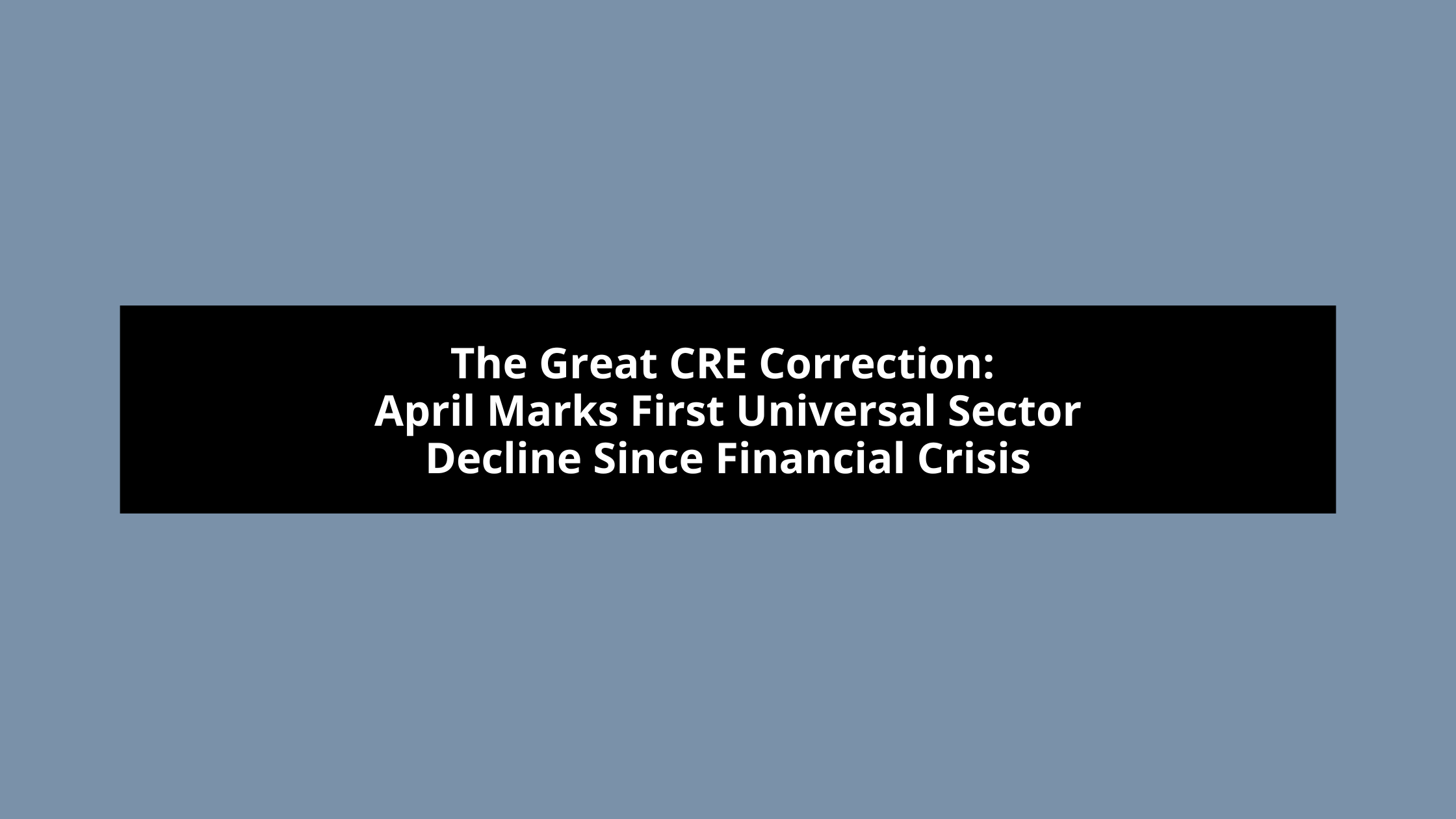The commercial real estate market is experiencing a reckoning after a prolonged period of “cheap
money” fueled an “everything bubble” and drove up valuations, particularly for office properties in
“superstar cities.” Now, the higher interest rate environment of 2023 is taking a major toll.
Research firm Capital Economics estimates the US commercial real estate market has already seen
$590 billion loss in property values this year, and they project another $480 billion wipeout in 2024
and $120 billion in 2025 – a 24% peak-to-trough decline. The primary culprit is the failure of a mass
return to office, which has devastated the office sector.
Capital Economics’ deputy chief property economist now expects office values to plummet more
than 40% peak-to-trough by the end of 2025, with no recovery even by 2040. He cites higher
interest rates in the long run than initially expected, with real rates (adjusted for inflation)
projected to be 1.5-2% in the 2030s, compared to near zero in the 2010s.
Moody’s Analytics’ head of commercial real estate analysis agrees the office sector still has a long
way to go in terms of distress. He expects a “pretty bloody headline year” in 2024 as 75% of
maturing office loans are likely to be in trouble, with low rents relative to loan amounts making
them hard to refinance.
The head of commercial real estate at JPMorgan Chase acknowledges this is a “sea change” for
offices, with older, less desirable properties already taking the biggest hit and likely needing to be
repurposed. While offices only make up around 20% of the commercial real estate market, the pain
is being felt.
The broader commercial real estate market is also facing headwinds, with volatile and rising
capitalization rates signaling increased risk. One analyst says this distress is “deeply tied to rates,
not fundamentals,” unlike past cycles, and will likely continue in the form of delinquencies as
creative financing options dry up.
However, an analyst at Cohen & Steers believes the market has already priced in much of the pain,
with private market valuations down 10-15% and the REIT market recovering substantially after
setting new lows. He sees this as more of a “slow grind” normalization, rather than a full-blown
collapse.
Still, the Cohen & Steers analyst warns “we are not in the clear” and predicts property valuations
will fall further, with this being a “once-in-a-generation-type event” on par with the early 1990s
savings and loan crisis and the 2008 Great Financial Crisis.
The multifamily sector also faces some risks, particularly from floating rate debt on properties
purchased at peak valuations. One analyst expects apartment values to decline 20% from mid-2022
to the end of 2024, as rents flatten while costs rise. Another notes the new supply coming online is
largely high-end, luxury units, even as many renters are already stretched thin.
The largest multifamily investors may be insulated, but overleveraged assets or those relying on
unrealistic rent growth projections could face substantial distress. The head of commercial real
estate at JPMorgan acknowledges the firm “won’t be immune” to the challenges, noting that the
days of 3.5% money are over and prudent underwriting is key.
Overall, the commercial real estate market is navigating a painful transition, with the office sector
bearing the brunt of the downturn so far. While a full-blown collapse may be avoided, substantial
further declines in values are expected, particularly in office and potentially multifamily as well.
Lenders and investors will need to carefully manage their exposure and underwriting standards to
weather this cycle. The path back to stability and growth remains uncertain, with the prospect of
higher interest rates for the foreseeable future.


